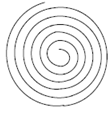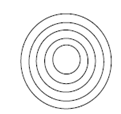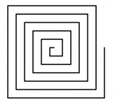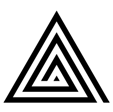This set of Computer Fundamentals Multiple Choice Questions & Answers (MCQs) focuses on “Optical Disks”.
1. A ____________ disk consists of a circular disk, which is coated with a thin metal or some other material that is highly reflective.
a) magnetic
b) optical
c) compact
d) hard
View Answer
Explanation: Optical disks are highly reflective. They can be used to store extremely large amounts of data in a limited space.
2. Optical disks are proved to be a promising random access medium for high capacity secondary storage.
a) True
b) False
View Answer
Explanation: Optical disks can store large amounts of data. The storage capacity depends on the sectors and the number of bytes.
3. The technology used in optical disks is ______
a) Reflective
b) Refractive
c) Laser Beam
d) Diffraction
View Answer
Explanation: Laser beam technology is used in optical disks for recording or reading of data on the disk.
It is sometimes called the laser disk/optical laser disk due to the use of laser beam technology.
4. The storage capacity of an optical disk is given by:
a) Number of sectors * number of bytes per sector
b) Number of sectors * 2(number of bytes per sector)
c) Number of sectors * 3(number of bytes per sector)
d) Number of sectors * 0.5(number of bytes per sector)
View Answer
Explanation: The storage capacity is given by the formula in option a. The most popular disk uses a disk of 5.25 inch diameter with a storage capacity of around 650 megabytes.
5. Rotation of the disk must vary __________ with the radius of the disk.
a) directly
b) inversely
c) concurrently
d) accordingly
View Answer
Explanation: The rotation speed is inversely proportional to the radius of the disk.
Optical drives use a constant linear velocity encoding scheme often referred to as the CLV scheme.
6. Which of the following correctly represents the track pattern of an optical disk ?
a) 
b) 
c) 
d) 
View Answer
Explanation: Option a correctly represents the track pattern of an optical disk. The second option shows the track pattern of a magnetic disk. The last two options are invalid.
7. The tracks are divided into sectors whose size _______
a) remains the same
b) keeps increasing
c) keeps decreasing
d) remains uneven
View Answer
Explanation: The tracks in an optical disk are divided into equal size sectors. Optical disk has one long spiral track, which starts at the outer edge and spirals inward to the center. Each sector is of the same length regardless of whether it is located near or away from the disk’s center.
8. CLV stands for, in terms of rotation of the optical disk ___
a) Concurrent lines value
b) Constant Linear velocity
c) constant linear value
d) concurrent linear velocity
View Answer
Explanation: It stands for constant linear velocity. The optical disk uses the CLV encoding scheme. Rotation speed depends on the radius of the disk.
9. The range of access times of optical disks is generally ______
a) 100 to 300 milliseconds
b) 10 to 30 milliseconds
c) 200 to 400 milliseconds
d) 20 to 40 milliseconds
View Answer
Explanation: The access times of optical disks are typically in the range of 100 to 300 milliseconds and that of hard disks are in the range of 10 to 30 milliseconds.
10. Which of the following is not a type of optical disk?
a) DVD
b) CD
c) WORM
d) Winchester
View Answer
Explanation: The Winchester disk is a type of hard disk. Others are all optical disks. WORM is nothing but CD-R i.e., CD recordable. Stands for write once read many.
Sanfoundry Global Education & Learning Series – Computer Fundamentals.
To practice all areas of Computer Fundamentals, here is complete set of 1000+ Multiple Choice Questions and Answers.
If you find a mistake in question / option / answer, kindly take a screenshot and email to [email protected]
- Practice Computer Science MCQs
- Practice Information Technology MCQs
- Check BCA Books
- Practice BCA MCQs
- Check Computer Fundamental Books
